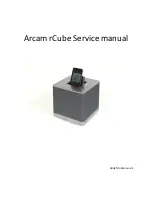
6
3. Software
Architecture
The 8300 Series Terminal system software consists of three modules: the
kernel & Application
Manager
module, the
System
module and the
Application
module.
3.1 Kernel & Application Manager
The kernel is the innermost core of the system. It has the highest security and is always protected by
the system. Only the failure of flash memory or improperly power off during system restart after
updating kernel will the kernel be destroyed. The kernel module ensures that users can always
download their application program even the operating system was crashed by the user’s program.
The kernel provides the following services:
Kernel Information
Information includes hardware version, serial number, manufacturing date, kernel version and
hardware configurations.
Load Application
To download the application program, BASIC run-time or font files.
Kernel Update
Sometimes the kernel might be changed for improving performance or other reasons. This
function allows you to keep the kernel updated. The update procedure is same as download user
program, but note that after updating the kernel, please do not power off until the system restart
itself.
Test & Calibrate
To perform a burn-in test and tune the system clock. This function is for manufacturing purpose
only.
Besides the kernel menu, if there is no application program exists, then upon power up the terminal
the following Application Manager’s menu will be shown:
Download
To download application programs (*.SHX), BASIC run-time (BC8300.SHX), BASIC
programs (*.SYN) or font files (8xxx-XX.SHX) to the terminal. There are 6 resident locations
and one Active Memory, i.e. at most 7 programs can be downloaded to the terminal. But only
the one downloaded to the Active Memory will be activated and running. To run other
programs, they need to be activated first, but only one at a time. Right after downloading, you
can input a name for the program or just press the enter key to keep its current name if there is.
And then the downloaded program’s type, name and size will be shown on the list when
entering the Download or Activate menu of the Application Manager. The file type is a small
letter follows the program number (01~06), it can be either ‘b’, ‘c’ or ‘f’ which represents
BASIC program, C program or font file respectively. The program name is up to 12 characters
and the program size is in unit of K bytes.
Activate
To copy one of the 6 resident programs to the Active Memory to make it become the active
program. After activating, the original program in the Active Memory will be replaced by the
new one. Note a font file cannot be activated, and a BASIC program cannot be activated either
if the BASIC run-time does not exist.
Upload
To transmit the application programs to a host PC or another terminal. The function allows a
Summary of Contents for 8300
Page 7: ...5 ...
































